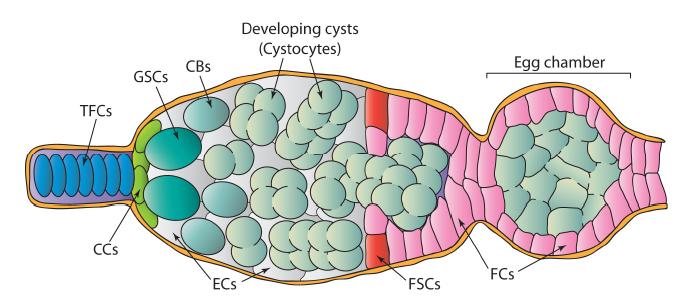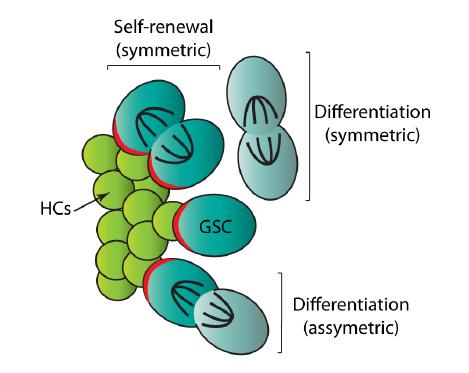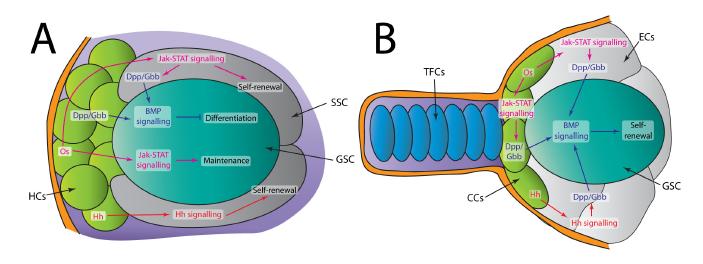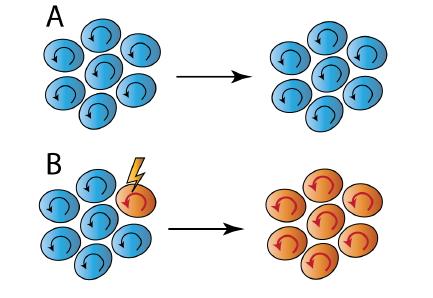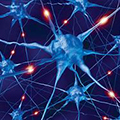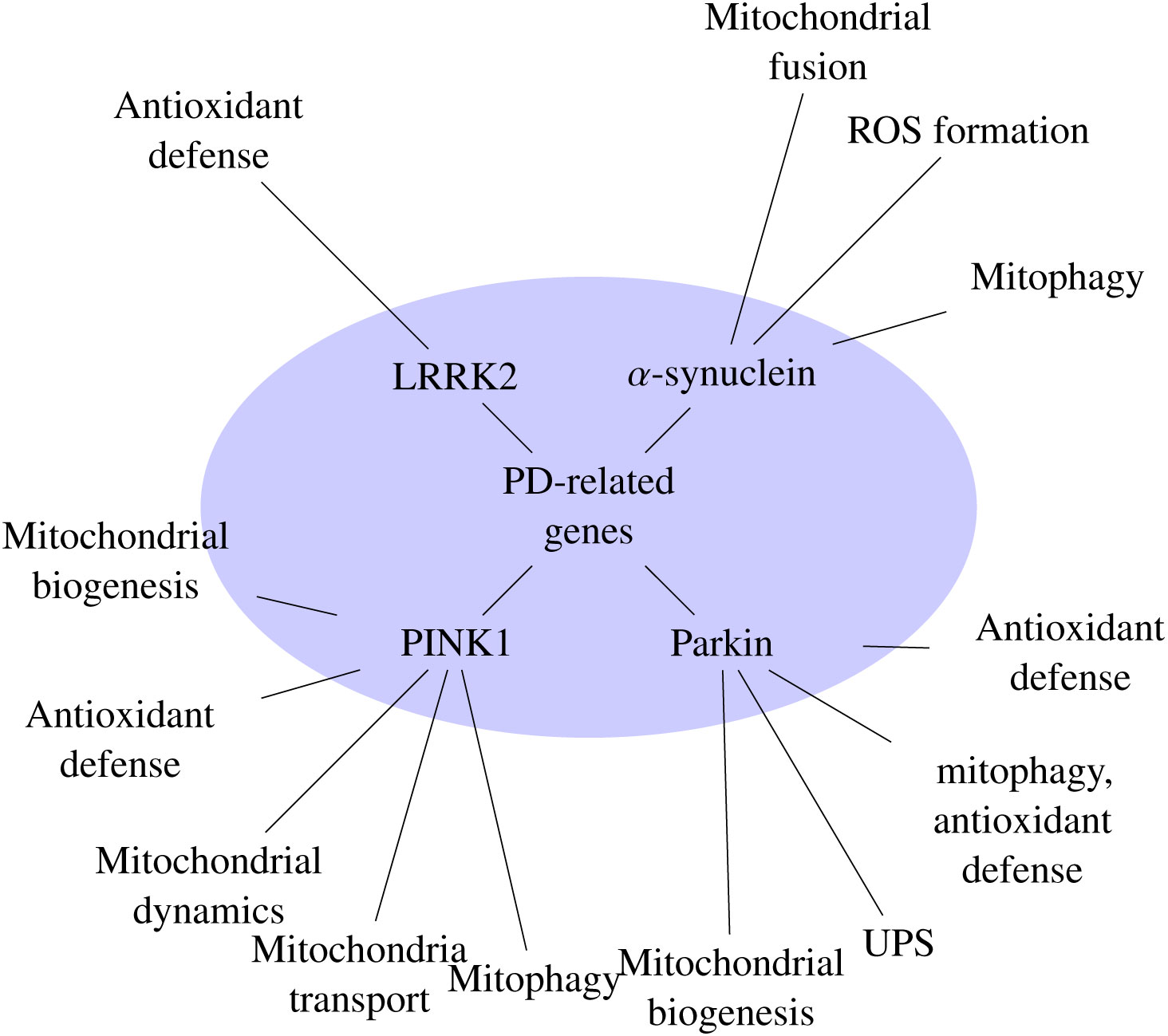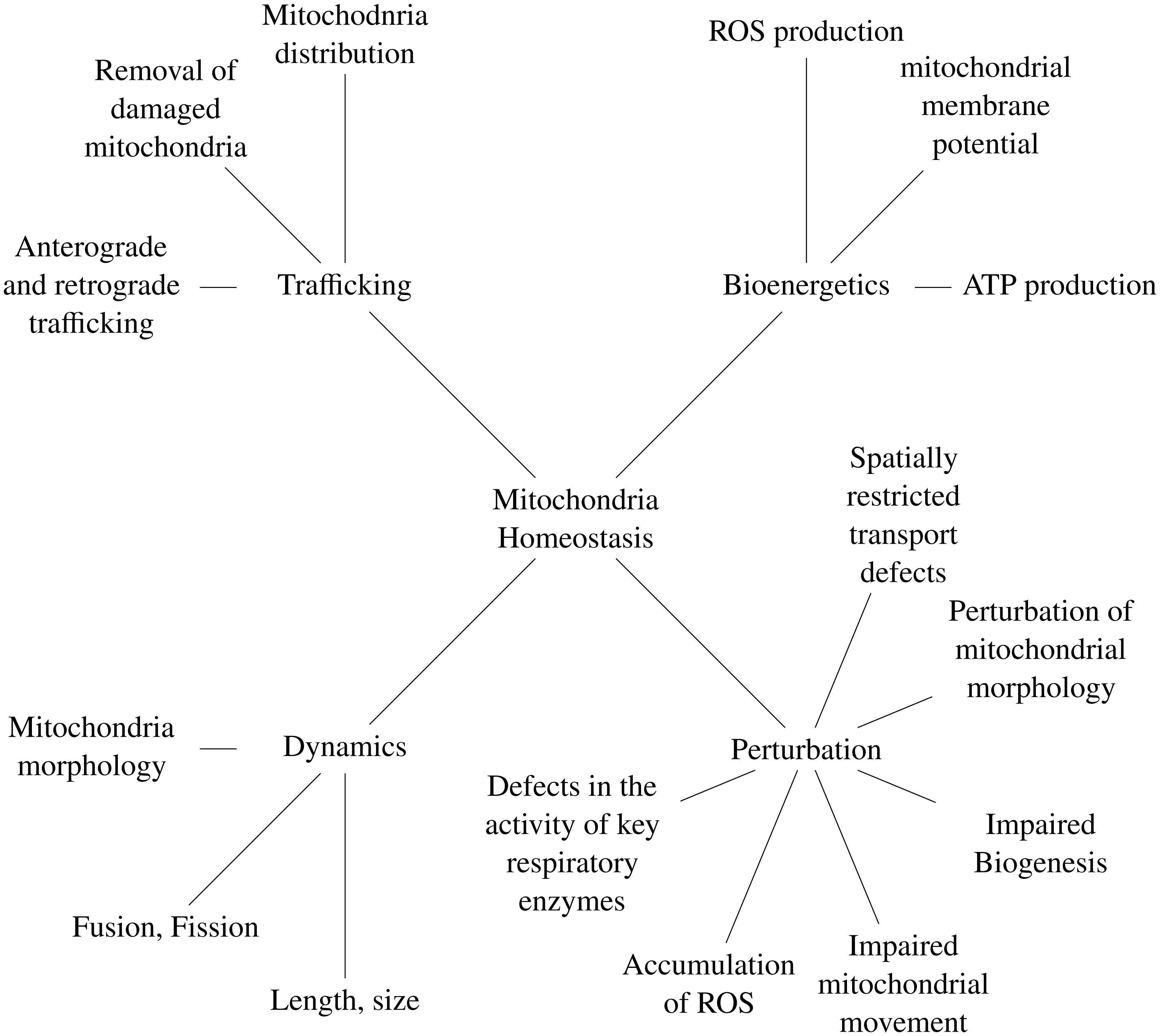1. The stem cell niche: restricting immortality
In all adult animals, continual replenishment of cell populations and, therefore, renewal of body tissues, is of critical importance. However, the majority of cells that make up adult tissues are highly specialised and terminally differentiated. Furthermore, the pluripotent stem cells present during the early stages of embryonic development have long since been depleted. So how is tissue homeostasis maintained? A different type of stem cell, the adult stem cell (ASC), also known as a tissue specific stem cell, is required. ASCs, which constitute only a small fraction of the total mass of a tissue, maintain their existence through self-renewing divisions, but also give rise to the specialised cells that make up the tissues in which they are located. Within these tissues, ASCs reside in a microenvironment called a “stem cell niche”. The concept of a stem cell niche was coined by Schofield in 1978 while discussing mammalian haemopoietic stem cells (HSCs) [1]. However, the first identified, studied, and characterised stem cell niches were those of the Drosophila male and female germlines [2,3,4,5,6,7,8]. Li and Xie have defined a niche as all the cellular components of the microenvironment surrounding stem cells, including the signals emanating from the support cells [9]. Although niche structures vary widely, even between tissues of the same organism, the conserved role of the stem cell niche as a regulator of stem cell identity and behaviour is now a well-established principle in biology [9,10,11,12].
Control over ASCs by their niche is of primary interest to cancer research, as it is essential for promoting stem cell maintenance, as well as restricting behaviours such as self-renewal and differentiation. It is easy to imagine stem cells proliferating freely, producing more stem cells and differentiated progeny, but their niches carefully regulate and suppress such behaviour. This is very important for an organism, as a dysfunctional niche may have disastrous consequences. At the very least, a lack of control over stem cell divisions can result in ectopic stem cell proliferation, leading to tissue hyperplasia or neoplasia. At worst, the loss of stem cell control and sustained proliferation may prompt the appearance of proliferative “cancer stem cells”, which behave as stem cells but without restrictions on their behaviours, resulting in tumourigenesis [13,14]. It is hoped that by using model systems that allow for the study of stem cells in vivo, such as the Drosophila gonads, we will gain a better understanding of the mechanisms controlling and preventing such deleterious stem cell behaviour. This review will highlight recent research using the Drosophila germline niches that examines key aspects of the control over stem cell behaviour and general gametogenesis, with a particular focus on those mechanisms which are disrupted in tumourigenesis.
2. The Drosophila testis
Drosophilamales have two testes, each a close-ended tubular structure harbouring two stem cell populations: the germline stem cells (GSCs) and the somatic stem cells (SSCs) (Figure 1). Both stem cell types adhere to a cluster of non-proliferative somatic cells called hub cells (HCs) at the apical end of the testis and, together, the HCs, GSCs, and SSCs make up the stem cell niche [2]. Within the niche, 6-9 GSCs surround the HCs, each enclosed by a pair of SSCs [2]. Adhesion between HCs and GSCs orients the mitotic spindle to ensure proper asymmetric stem cell divisions [15], during which one daughter cell retains its stem cell identity and remains attached to the HCs, enclosed by a pair of SSCs, while the other will move away from the HCs and out of the stem cell niche [2,15]. Interestingly, live imaging of the testis has revealed GSCs can also undergo symmetric divisions [16], which will be discussed later on. The GSC daughter that exits the niche is called a gonialblast (GB), and it is enclosed by two non-proliferative SSC daughter cells called somatic cyst cells (SCCs). The GB undergoes four rounds of synchronous transit-amplifying (TA) divisions with incomplete cytokinesis, forming a 16-cell spermatogonial cyst still enclosed by its original SCC partners [4]. 16-cell spermatogonial cysts then enter a growth phase and terminally differentiate into primary spermatocytes, which undergo meiosis to produce 64 haploid spermatids [4].
3. The Drosophila ovary
Drosophila females possess two ovaries, each made up of 12 − 16 ovarioles. Positioned at the apical tip of each ovariole resides a structure called the germarium (Figure 2). Each germarium contains 2− 3 GSCs supported within a niche contributed to by three somatic cell types: the anterior terminal filament cells (TFCs), the cap cells (CCs), and the escort cells (ECs) [8,17]. The GSCs divide asymmetrically, producing a stem cell which remains associated with the niche, and a cystoblast (CB) which exits the niche [3]. As with the male germline, the CB undergoes four rounds of synchronous TA divisions with incomplete cytokinesis, producing a 16-cell germline cyst known as a cystocyte. Unlike the more permanent germ-soma association in the testis, live imaging indicated ECs have fixed positions within the germarium, surrounding and interacting transiently with the developing cysts as they progress through the germarium [18]. Once the 16-cell cystocyte has formed, the ECs are replaced by a monolayer of somatic epithelial follicle cells (FCs) which enwrap the cysts, creating individual egg chambers [19]. These FCs are produced by two follicle stem cells (FSCs) that exist in their own niche, halfway down the germarium [19,20,21,22]. Within the egg chamber, one of the 16 germ cells is selected to differentiate into an oocyte, while the others become polyploid nurse cells, synthesising proteins and transcripts necessary for oocyte development [5,23]. As the egg chamber progresses down the ovariole, the oocyte will undergo meiosis and develop into the female gamete [5,23].
4. Asymmetry and symmetry in stem cell divisions
Upon division, stem cells can produce two daughter cells with different identities. One daughter cell retains self-renewing characteristics, while the other differentiates to replenish and rejuvenate damaged or ageing tissues. This asymmetric stem cell division is thought to have evolved as a simple means of maintaining constancy in the numbers of stem cells and differentiated cells, as well as suppressing tumour formation by preventing an expansion of proliferative stem cell populations [24].
Cell fate determination is controlled by the relative spatial environments daughter cells find themselves in following cytokinesis, and is largely determined by the position and orientation of the mitotic spindle, controlling the cleavage plane (Figure 3). For example, in the developing neural tissues of mammals, spindle orientation within neuroepithelial and radial-glial cells dictates whether divisions are symmetric or asymmetric [25,26]. Within the Drosophila testis, Apc2, an orthologue of the human tumour suppressor Adenomatous polyposis coli (APC), is critical for anchoring the mother centrosome to the HC-GSC interface, fixing the division plane perpendicular to the niche and so forcing one of the two daughter cells away from the niche [15]. The mother centrosome produces a robust array of microtubules and remains consistently fixed to the HC-GSC interface, while the daughter centrosome has fewer microtubules, and migrates around the cortex [27]. A centrosome orientation checkpoint operates specifically within the GSCs to achieve the necessary asymmetric cell divisions [28]. Thus, with every recurring asymmetric division, the mother centrosome is inherited by the daughter cell associated with the niche. The daughter cell outside the niche is excluded from the self-renewing signals, thereby beginning the differentiation process. Mutations disrupting the link between the centrosome and cell cortex in testis GSCs result in a higher incidence of spindle orientation defects and an excess number of GSCs [15,29]. Similar to the testis, the mitotic spindle within the ovary’s GSCs also orientates perpendicular to the niche to maintain a balance between self-renewal and differentiation. In contrast to testis GSCs, however, proper spindle orientation in an ovary GSC depends on anchorage to the spectrosome, a germline specific organelle located on the apical side of the GSC [30,31]. Localisation of a centrosome and Apc2 to the CC-GSC interface is reportedly controlled by the polarised activation of the small GTPase Rac1 [32]. Intriguingly, studies have shown the mother and daughter centrosomes within Drosophila GSCs have strikingly different characteristics, which correlate with their inheritance. Upon division of GSCs in the ovary, the majority of self-renewing GSCs inherit the newly synthesised daughter centrosome [33]. Asymmetric centrosome inheritance has previously been reported in human neuroblastoma cell lines, where the inheritance of the daughter centrosome was correlated with greater self-renewal potential, and thus an increased likelihood of contributing to malignancy [34].
Drosophilatestis GSCs have also been reported as being biased towards segregating the template sister strand of the X and Y chromosomes into the daughter GSC associated with the niche upon asymmetric division, though no such preferential segregation was observed for the autosomal chromatids [35]. Furthermore, histone H3 has been reported to asymmetrically segregate in much the same way as the centrosomes. During asymmetric GSC divisions, the original H3 histones are preferentially segregated into the daughter cell that will take on GSC fate, while the newly synthesized H3 histones are segregated into the differentiating daughter GB [36]. Currently, it is unclear why these cellular components are asymmetrically inherited, but the fact that it appears to be evolutionarily conserved suggests it may play an important role in regulating the molecular properties of self-renewal and differentiation and, therefore, be an important contributing factor for tumour initiation upon disruption.
For some time, it was believed stable stem cell populations were maintained within the niche solely through continuous asymmetric divisions. However, recent live imaging of the Drosophila testis niche has revealed just how dynamic stem cell maintenance truly is [16]. Although 80% of GSCs underwent their characteristic asymmetric divisions in the niche, GSCs were also shown to be lost through direct differentiation, or gained through symmetric self-renewal [16]. Symmetric GSC divisions in Drosophila ovaries have been observed upon elimination of neighbouring GSCs [8]. These observations are consistent with findings from lineage tracing experiments, which revealed a substantial number of symmetric divisions within mammalian ASC populations to produce two daughter cells with stem cell characteristics [37,38,39,40,41,42]. In tissues such as the intestinal crypts of mammals, where intestinal stem cells (ISCs) undergo high levels of symmetric stem cell divisions [40,41], tissue homeostasis must be achieved through an equal amount of direct differentiation by ISCs. Therefore, maintaining a constant stem cell population is far more involved than previously imagined, though the mechanisms regulating this maintenance are still poorly understood.
5. Stem cell self-renewal and differentiation
Stem cells possess two key characteristics: self-renewal and potency. Self-renewal refers to the ability of a stem cell to divide and produce a cell which retains these characteristics. Potency is the ability of stem cells to produce progeny that can undergo differentiation into specialised cell types. These processes of self-renewal and differentiation are also key aspects in tumourigenesis. Many human tumours display a hierarchical organization, containing cells of phenotypic and functional heterogeneity, but are maintained by a small population of self-renewing “cancer stem cells” that potentially originated from a single such cell [43,44,45,46,47,48]. The stem cell niche controls the balance between self-renewal and differentiation, maintaining and regulating stem cell populations through multiple highly conserved extrinsic signals (Figures 4A, B), and is therefore a key player in preventing tumour formation.
One key regulatory pathway controlling self-renewal in the gonads is the Janus kinase-Signal Transducer and Activator of Transcription (Jak-STAT) signalling pathway (Figures 4A, B). Disruptions to Jak-STAT signalling are found in a range of human cancers, with different pathway components functioning as oncogenes as well as tumour suppressors [49,50,51,52,53]. In Drosophila gonads, the ligand Outstretched (Os) (also known as Unpaired) is secreted by the HCs/CCs, binds to the receptor, Domeless (Dome), in sympathetic cells and, via signal transduction, activates the single Drosophila STAT, Stat92E. Activated Stat92E transcriptionally regulates gene expression to promote self-renewal and inhibit differentiation [54,55]. In both the testis and ovary, a loss of Jak-STAT signalling leads to GSC loss by precocious differentiation, while ectopic Jak-STAT signalling induces ectopic GSC proliferation and self-renewal, producing tumour-like masses of undifferentiated cells [17,55,56,57,58,59,60,61].
Another major signalling pathway controlling self-renewal and differentiation in both gonads is the Bone Morphogenetic Protein (BMP) signalling pathway (Figures 4A, B). The mammalian BMP pathway plays a central role in growth, proliferation and differentiation [62]. BMPs also control stem cell self-renewal and cell fate choices in mammals, and it is hypothesised that in playing such a critical role, disruptions to BMP signalling have direct consequences on tumourigenesis [63]. In Drosophila gonads, BMP signalling is activated in the GSCs by the BMP ligands Decapentaplegic (Dpp) and Glass-bottom boat (Gbb), which are secreted by the HCs/CCs and SSCs/ECs. These ligands bind the receptors, Thickveins (Tkv) and Punt (Put), on the GSC surface, initiating a signalling cascade that eventually activates the transcription factor and pathway effector Mothers against dpp (Mad) [64,65]. Activated Mad then acts to repress transcription of the differentiation factor, bag-of-marbles (bam), in the GSCs of both testes and ovaries [64,65,66]. However, once the GSC progeny exit the niche area, BMP signalling wanes, allowing for the expression of bam in the TA cyst cells [64,65,66,67,68]. In the ovary, BMP signalling is sufficient to suppress GSC differentiation and promote self-renewal. Overexpression of BMP signals generates a germarium filled with GSC-like cells incapable of differentiating, while loss of BMP signalling induces premature GSC differentiation [65,69,70]. A steep BMP response gradient is achieved within the germarium through the ubiquitination and proteolysis of Tkv in the CBs, promoting bam expression and concomitant differentiation [71]. In the testis, BMP signalling is necessary for the GSC-intrinsic repression of bam, which would otherwise induce their premature differentiation [64,66,72]. However, in contrast to the female germline, BMP signalling in isolation is insufficient to promote GSC identity within the male germline [64].
Notch signaling has also been shown to play prominent roles in the formation and maintenance of the GSC niche within both Drosophila gonads [73,74,75]. Expanded Notch activation leads to the formation of ectopic CCs capable of supporting supernumerary GSCs, whereas compromising Notch signaling decreases CC number and, consequently, GSC number [75,76].
Yet another major signalling pathway regulating stem cell self-renewal in the Drosophila gonads is the Hedgehog (Hh) pathway (Figures 4A, B). In mammals, Hh signalling plays a conserved role in the regulation of cell proliferation and tissue patterning, as well as in stem cell maintenance [77]. Oncogenic disruptions to Hh signalling are thought to play major roles in the development of human cancers such as medulloblastoma [78,79] and basal cell carcinoma [80,81,82]. In Drosophila, the Hh ligand binds to and inactivates its receptor, Patched (Ptc), which relieves inhibition of Smoothened (Smo), allowing a signalling cascade to activate the transcription factor Cubitus interruptus (Ci) [83]. In the Drosophila testis, studies have recently demonstrated that Hh, secreted by the HCs, activates the signalling cascade in the SSCs where it is necessary for their self-renewal [84,85,86]. A loss of ptc leads to ectopic SSC proliferation, while a loss of smo leads to premature differentiation, and this control over SSC fate acts in parallel to Jak-STAT signalling [84,85,86]. In the ovary, Hh signalling from CCs to adjacent ECs is required to activate expression of the BMP ligands Dpp and Gbb to maintain the GSCs [87]. Furthermore, a precise level of Hh signalling is required in the FSCs, with only a slight increase in pathway activity being sufficient to stimulate FSC over-proliferation, and pathway disruption leading to FSC loss [21,88].
Fascinatingly, despite leaving behind the self-renewing niche signals, the differentiating spermatogonia and cystocytes of the Drosophila testis and ovary, respectively, are able to regress and dedifferentiate into stem cells. Dedifferentiation has important implications in tumourigenesis, as some cancers are suspected to arise due to unrestrained proliferation of dedifferentiated cells that have acquired stem cell-like properties [89]. In the Drosophila ovary, GSCs can be forced to differentiate by transient bam expression. Subsequent removal of this differentiation-inducing signal results in the disintegration of 4- to 8-cell cystocytes, producing germ cells that regenerate a population of functional GSCs within the niche [90]. A similar mechanism also functions in the testis, allowing the spermatogonia to disintegrate and regenerate functional, self-renewing, GSCs [91,92]. The Drosophila gonads could therefore be an informative model for studying the molecular processes that promote dedifferentiation and promote development of tumourigenic cancer stem cells.
The Drosophila gonads have recently been used in a number of high-throughput studies, which aimed to discover factors involved in stem cell self-renewal [54,93,94,95]. The range of molecular functions associated with the factors identified indicates researchers are still a long way from understanding how stem cell self-renewal is regulated. As an example, one such study screened approximately one quarter of the genes within the Drosophila genome using targeted RNAi knock-down transgenes, identifying factors involved in a huge range of fundamental cellular processes, including; transcription, chromatin regulation, splicing, translation, proteasomes, DNA replication, kinetochore and spindle formation, mitochondrial function, cytokinesis, and ribosome biogenesis [94].
6. Stem cell competition
Contrasting with early beliefs that suggested stem cells were immortal, recent evidence has revealed stem cells have a limited life span, and are naturally replaced to ensure the niche is occupied with healthy cells [96]. Emerging evidence has identified stem cells are often in direct competition with neighbouring stem cells and, as a result, can be stochastically replaced [97]. Studying the mechanisms that allow certain cells to outcompete their neighbours has direct relevance to understanding tumourigenesis. Cancerous cells will, invariably, compete with their non-diseased neighbours, and dangerously proliferative cancerous cells will, invariably, win [98,99]. An example of this is seen in a recent study examining the behaviour of human ISCs, which revealed APC mutant crypts contained an expanded population of stem cells that replaced each other more frequently than normal ISCs [100]. It is speculated that the higher proliferation rate in APC mutant cells provided them with a competitive advantage, allowing them to outcompete neighbouring cells and disrupt the homeostatic balance. Therefore, to understand the mechanisms that lead to tumourigenesis, it is important to understand the mechanisms governing normal stem cell competition, as well as biological changes that create stem cells with an enhanced ability to occupy a niche.
Studies in male and female Drosophila gonads have demonstrated stem cells naturally compete with each other, and can acquire a competitive advantage by deregulation of the mechanisms that normally function to control self-renewal and proliferation (Figures 5A, B). One example of natural competition in the testis is between adjacent GSCs and SSCs for niche occupancy. The Suppressor of cytokine signalling 36E (Socs36E) is essential for suppressing Jak-STAT signalling in SSCs and preventing the displacement of GSCs from the niche [101,102]. Another example of natural competition involves the two FSCs that reside on opposite sides of the germarium in their own, somewhat atypical, stem cell niches [20,21]. The immediate progeny of each FSC are reportedly capable of migrating across the germarium and competing for niche occupancy at the other FSC niche [20,103,104]. In contrast, a variety of genetic lesions are able to confer enhanced competitive potential upon stem cells. Within the Drosophila germarium, differentiation-defective GSCs outcompete normal stem cells for residency within the niche by strengthening niche adhesion through up-regulation of the adherens junction factor shotgun, the Drosophila orthologue of E-cadherin (E-cad) [105]. Also, germarium GSCs that acquire higher levels of the Myc orthologue, diminutive (dm), develop a competitive advantage over neighbouring GSCs with lower dm levels, facilitating the expansion of precancerous stem cells [106]. Furthermore, two recent studies have reported the conserved Hh and Hippo (Hpo) signalling pathways are involved in regulating stem cell competition in the Drosophila gonads [107,108]. Within the ovary, Huang and colleagues demonstrated ectopic Hh signalling leads to over-proliferating FSCs which outcompete their wild-type neighbours due to an up-regulation of the downstream Hpo pathway effector, yorkie (yki), and concomitant Cyclin E (CycE) activity [108]. Similarly, Amoyel and colleagues used the testis to show SSCs can acquire a competitive advantage by becoming more proliferative, through either ectopic Hh signalling or expression of activated Yki [107]. It is tempting to consider that, like in the ovary, Hh signalling is promoting yki expression, and so both systems are behaving in essentially the same way. These findings provide important insights into the behavioural mechanisms of pre-cancerous stem cells and their ability to clonally occupy a tissue niche.
7. Cell adhesion and polarity: maintaining the right connections prevents tumour development
Cell adhesion and cell polarity play critical roles in managing proper cell and tissue architecture, with their disruption correlating strongly with many human metastatic cancers. Self-renewal promoting niche signals act over a very short range, so stem cells must adhere to their niche in order to be receptive of these signals. In doing so, stem cells are generally polarized with respect to the niche environment in which they reside. Adhesion factors not only regulate cell-cell contact, but also play critical roles in directing the symmetry of divisions and controlling the homeostatic balance between self-renewal and differentiation.
The factors controlling adhesion and polarity are evolutionarily conserved, with many being first identified to act as tumour suppressors in Drosophila. Within the Drosophila testis, adhesion complex components and regulators, including E-cad [109], β-catenin (Armadillo) [15], integrins [110], and the tumour suppressor Apc2 [15], are asymmetrically localised at the HC-GSC interface to strengthen cell-cell contacts, but also play a role in stem cell maintenance by providing polarity cues by which GSCs orientate their spindles [15,27]. As discussed previously, these adherens junction factors anchor the centrosome to the HC-GSC interface to control spindle orientation [109]. These localised adherens junctions also limit BMP niche signals specifically to the sites of the adherens junctions at the HC-GSC interface in the Drosophila testis [111]. E-cad plays a similar role in the ovary, with high levels of E-cad localised at the CC-GSC interface [112], and in the FSCs E-cad is essential for their maintenance and for anchoring within their niche [113]. Studies involving other Drosophila stem cell populations are also beginning to reveal the mechanisms entwining cell polarity, spindle orientation, and tumourigenesis [114,115].
Cell adhesion molecules not only play important roles in stem cell maintenance, but also regulate stem cell proliferation, self-renewal, and differentiation within the niche [116,117,118]. A reduction in E-cad levels is well known to be associated with cells undergoing epithelial-mesenchymal transition, which is also a common hallmark of cancer metastasis [119]. E-cad is also known to act as a proliferation suppressor, and a down-regulation of E-cad expression is associated with increased proliferation [120,121]. Upon GSC division in the Drosophila ovary, differentiating stem cell daughters down-regulate E-cad expression, preventing these cells from re-entering the niche [122]. In the ovary, GSC maintenance requires repression of the differentiation promoting factors bam and benign gonial cell neoplasm (bgcn), which act to repress E-cad expression. A lack of E-cad repression in differentiation defective bam or bgcn mutant germ cells partially explains the mechanisms allowing these cells to outcompete their wild-type counterparts [105].
Critical for germ cell differentiation and proper spermatogenesis is the enclosure of the TA spermatogonia by the SCCs. As these differentiating germ cells exit the Drosophila testis niche, SCCs envelop and remain associated with the developing germline. This germ-soma interaction is essential for both cell-cell communications and the mutual development and differentiation of both cell lineages. As such, disruptions to the adhesive capacity of either lineage can lead to the production of supernumerary stem cells, as well as ectopic rounds of TA divisions, generating tumourous cysts [6,7,123,124,125,126,127]. The Epidermal Growth Factor (EGF) signalling pathway plays a critical role in the generation and maintenance of proper germ-soma interaction. In the testis, Spitz (Spi), an EGF Receptor (EGFR) ligand, is activated by Stem cell tumour (Stet) and secreted by the germline cells, activating the EGFR and the downstream Ras/MAPK signalling cascade in the adjacent somatic cells [126,127]. EGFR activation leads to the differential regulation of the small GTPases, Rac1 and Rho1, via the guanine nucleotide exchange factor, Vav, to promote actin cytoskeletal reorganisation such that the somatic cells are able to envelop the germline cysts [126,128]. The conserved motor protein Dynein light chain-1 (Ddlc-1) has also recently been shown to function in the somatic cells to localise several cell adhesion molecules to the germ-soma boundary, and prevent over-proliferation of the germline [129], although, at present, the mechanism by which this occurs is unknown.
Recent evidence has suggested the SCCs of the Drosophila testis are polarised, with several cytoskeletal and polarity components, including the tumour suppressor genes, discs large 1 (dlg1), scribbled (scrib), and lethal (2) giant larvae (l(2)gl), localising to the inner surface in contact with the germline [130]. dlg1, scrib and l(2)gl encode scaffold proteins that act cooperatively to regulate apico-basal cell polarity, cell adhesion, proliferation, and differentiation, and misregulation of the orthologues of these factors is associated with a range of human cancers [131]. Within the Drosophila testis these factors play a critical role in the somatic lineage, regulating somatic cell survival and proper testis development [132,133]. The Dlg1-Scrib-L(2)gl complex has also been studied with respect to apico-basal polarity within the epithelial FC monolayer of the ovary. Scrib, Dlg1, and L(2)gl localise to the lateral membrane of follicle cells, and a loss of any of these factors results in disruptions to cell morphogenesis, multi-layering of the FCs, and an invasion into the underlying germ cells [134], behaviours analogous to those observed in cancer cells upon loss of contact inhibition. Furthermore, reduction of either l(2)gl or dlg1 levels enhances FSC competitiveness, improving their chances for successful invasion of neighbouring FSC niches [103].
8. Hormonal regulation of stem cell proliferation
Systemic steroid hormone signals play an extremely important role in animals, signalling to cells and allowing them to respond to changing environmental and physiological conditions, as well as maintaining tissue homeostasis. However, evidence exists implicating some of the best known steroid hormones, oestrogens and androgens (which encompass the human sex hormones) in pathogenic roles in a variety of cancers [135,136,137]. These include breast [138,139], endometrial [140], thyroid [141], colon [142], and prostate cancers [143]. In addition, steroid hormone signalling has recently been shown to promote HSC self-renewal in mice [144].
In contrast to humans, Drosophila has only one major steroid hormone, twenty-hydroxyecdysone (20E), commonly referred to as ecdysone. Some argue that ecdysone signalling may be equivalent to human sex hormone signalling, particularly that of oestrogens [145,146]. Ecdysone signalling occurs when 20E binds to a heterodimer receptor complex made up of Ecdysone receptor (EcR) and Ultraspiracle (Usp) [147,148]. EcR and Usp are orthologous to human nuclear receptors and, acting as one complex, enter the nucleus and bind complex-specific promoter sequences, effecting transcription. The EcR-Usp heterodimer is also known to associate with at least one co-activator, Taiman (Tai), which is similar to the human AIB1 protein, known to be overexpressed in some breast cancers [149,150].
Ecdysone signalling is known to be important for the later stages of oogenesis, particularly for proper egg chamber formation and vitellogenesis [151,152,153,154,155]. However, additional research has examined the roles of ecdysone signalling in the germarium, and has demonstrated ecdysone signalling acts directly upon the GSCs to promote their proliferation and maintenance, possibly by indirect positive regulation of BMP signalling through the NURF chromatin remodelling complex [156,157]. Another study by König and colleagues also demonstrated ecdysone promotes BMP signalling in the GSCs, and also identified a somatic role for ecdysone signalling, with tai being required in the ECs to ensure proper germline differentiation [158]. Interestingly, Ables and Drummond-Barbosa had shown tai was dispensable in the GSCs, indicating cell-specific requirements for ecdysone signalling in the germarium [156]. Morris and Spradling also reported a requirement for ecdysone signalling in the somatic cells, suggesting it was necessary for promoting GSC maintenance, as well as proper formation of 16-cell cystocytes [159].
Knowledge regarding ecdysone signalling in the testis is also relatively new and, in fact, the little research that has been done presents conflicting reports. In contrast to their findings in the ovary, Morris and Spradling determined ecdysone signalling was not required in the somatic cell lineage of the testis [159]. In agreement with Morris and Spradling, a more recent study by Qian and colleagues found that while ecdysone receptor components are all expressed in the somatic cell lineage, their loss causes no apparent defects [159,160]. They did, however, identify a role for ecdysone signalling in opposing EGF signalling; knockdown of ecdysone signalling elements rescues the disruptions to somatic cell enclosure of the germline, and somatic cell differentiation, caused by a temperature sensitive Spi allele [160]. An opposing view to these studies is presented by Li and colleagues, who demonstrate that ecdysone signalling is required in the SSCs for their maintenance and to non-autonomously maintain the GSCs, and that it may act through the NURF complex [161].
Therefore, it appears there is some confusion regarding precisely how ecdysone signalling works in the germarium and the testis. Indeed, there is debate as to whether ecdysone signalling is even required within the testis. This is an interesting divergence from the ovary, where ecdysone signalling can act autonomously to promote GSC proliferation and maintenance [156].
9. Maintaining tissue homeostasis through proliferative control
Given the vast potential of stem cells to produce new tissue, proliferative control is essential for the maintenance of tissue homeostasis and to prevent tissue overgrowth. Cancer cells arise when mutations prevent cells from responding to cues controlling growth, proliferation, and apoptosis. In the Drosophila testis and ovary, several types of proliferation need to be considered. In both sexes, proliferation must be regulated within the various stem cell populations (GSCs, SSCs, and FSCs), as well as the TA divisions of the germline. In the females, there is also proliferation of the FSC progeny to consider, as the FCs are not fully differentiated and continue to divide to produce an epithelial cell monolayer to enclose the maturing germline cyst [20,162]. Proliferative control in both the testis and ovary is not fully understood, though a number of signalling pathways and factors have been shown to be required for maintaining proper proliferative behaviours.
Cellular quiescence is a major contributing factor to the maintenance of tissue homeostasis; acting to ensure cells do not divide unless required. Two recent studies, examining the normally quiescent Drosophila testis HCs, have identified the potential for these differentiated cells to re-enter the cell-cycle and contribute to the somatic cell lineages of both HCs and SSCs [163,164]. Notably, Hétié and colleagues demonstrated that HCs can be coaxed out of quiescence by ablating the SSC population, or through ectopic expression of the cell cycle regulators Cyclin D (CycD) and Cyclin-dependent kinase 4 (Cdk4), with both methods producing fully-functional ectopic HCs and niches [163]. Not only is stem cell behaviour dictated by local niche signals, it is also responsive to external signals, such as diet. Calorie restriction has been shown to increase lifespan and protect against cancer in mammals [165], while prolonged fasting can promote HSC self-renewal and regeneration [45]. In Drosophila, GSC proliferation in both the testis and ovary and FSC proliferation in the ovary are known to be regulated by nutritional signals [162,166,167,168,169]. Protein-rich diets are able to promote high rates of cell division, while protein-deficient diets reduce proliferation [162,166,167]. It is thought that this nutritional response is mediated by insulin signalling [162,166,167,168,169,170,171,172,173]. Interestingly, the growth-promoting insulin signalling pathway is known to impact tumourigenesis in humans, particularly in patients also suffering from diseases such as obesity and type 2 diabetes [174].
Germline proliferation in the Drosophila testis is also regulated by the EGF signalling pathway. This pathway is well known to play a significant role in human tumourigenesis, with oncogenic disruptions in a wide range of cancers, and elevated levels of EGF signalling often being correlated with reduced survival rates [175,176,177]. The EGF signalling pathway has a number of functions during testis development, including the previously discussed role in germ-soma interactions, and disruptions to the pathway can result in ectopic, over-proliferating early germline cells, as well as disrupted germline and somatic cell differentiation [6,7,123,124,125,126,127]. A specific level of EGF pathway activity is required for proper germline enclosure, while it is thought that a higher dose of EGF signalling is needed for proper proliferation and progression through the TA spermatogonial divisions [124]. Attenuating EGF signalling not only disrupts germline enclosure, but can also result in asynchronously dividing germ cell cysts [124]. Within the ovary, EGF signalling is not as well understood. The pathway is known to be activated in the somatic ECs after signalling from the germline, where it is required to regulate somatic enclosure of the germline, as well as germline differentiation [127]. These phenotypes in the ovary are likely due to a link with BMP signalling, whereby EGF signalling in the ECs suppresses the expression of the glypican, dally, which is necessary for BMP signalling and GSC maintenance [178,179,180]. Furthermore, in the Drosophila testis, over-proliferation of the TA spermatogonial cells is prevented by proper BMP signalling. The BMP receptors Put, Saxophone (Sax), as well as the downstream effectors Smad on X (Smox) and Schnurri (Shn), have all been found to function in the SCCs to restrict germ cell proliferation [181,182].
As Drosophila age, self-renewing signals begin to decline, leading to a loss of stem cells within the niche [183,184]. Furthermore, the proliferation rate of ageing stem cells is reduced due to a higher incidence of misoriented spindles [185]. These age-related declines in GSC number and function can be reversed by increasing self-renewal signals or inducing E-cad expression [183,184]. An age-related decrease in GSC proliferation is also associated with a notable reduction in the levels of the cell cycle regulator String (Stg), the orthologue of Cdc25 [186]. It has been shown that this decrease in proliferation can be reversed by germline specific expression of stg, though this has the undesirable side-effect of inducing a high frequency of germline tumours [186].
10. Conclusion
We hope that this review has highlighted the myriad ways the Drosophila testis and ovary can be used as model systems to dissect not only stem cell behaviours and their regulatory systems, but also the mechanisms leading to tumourigenesis. The Drosophila gonads can offer unparalleled insight into stem cell behaviours, especially when combining genetic techniques that allow for the disruption of individual genes within single cells or cell lineages with imaging methods that enable the visualisation of stem cells within their in vivo niches. However, we acknowledge that there is much research we were unable to discuss in this review. Therefore, as we feel it may be of interest to the reader, we would like to note some of these areas and provide references for the reader to explore.
For example, we have only briefly discussed epigenetic control in the Drosophila gonads. Epigenetic mechanisms are well known to play significant roles in the development of certain human cancers [187]. In Drosophila, epigenetic control of stem cell maintenance and self-renewal, via mechanisms like chromatin remodelling and histone modification, plays a significant role in both the testis [188,189,190,191,192] and the ovary [157,193,194,195]. We were also unable to comprehensively discuss the various signalling pathways controlling stem cell behaviours in both the testis and ovary. For example, the voluminous nature of the research regarding roles for BMP signalling, particularly in the Drosophila ovary, simply put this beyond reach. We recommend some excellent recent reviews which give highly accessible dissections of signalling pathways in both the ovary [196] and testis [197,198]. Another pathway we have not discussed in great detail is the Hpo signalling pathway, a growth-limiting pathway known to be associated with a variety of human cancers [199]. Though the pathway has not been fully dissected in either the testis or ovary, its downstream effector, Yes-associated protein (Yap) in humans and Yki in flies, is thought to play a role as an oncogene in ovarian cancers [200]. There are also some individual genes that have escaped discussion; for example, ken and barbie, a self-renewal factor in the testis [201] and orthologue of B-Cell Lymphoma 6, is commonly disrupted in non-Hodgkin’s lymphomas [202]. Another such gene is headcase, which is necessary for HC maintenance in the testis [203] and is an orthologue of HECA, a commonly deleted gene in some pancreatic and renal cancers [204]. Finally, the process of border cell migration, a key event in egg chamber development, has emerged as an excellent model system by which to examine cell invasion. Research into border cell migration has provided insights into the mechanisms of cancer metastasis, but the field is extensive and far beyond the scope of this review to explore. As such, we recommend two recent reviews [205,206], which will prime the reader for exploring this fascinating topic.
Acknowledgments
We thank Sarah Diepstraten for creating the images in this review.
Conflicts of interest
The authors declare no conflicts of interest in this paper.









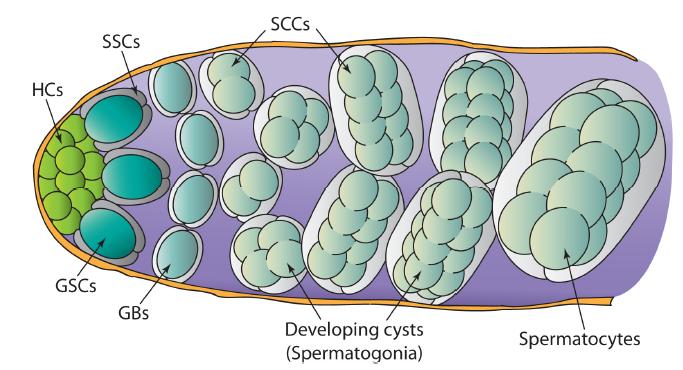
 DownLoad:
DownLoad: 